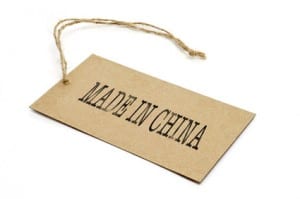 When sourcing products from China, it’s worth spending a little time thinking about labels and labelling. There are three main questions to address:
When sourcing products from China, it’s worth spending a little time thinking about labels and labelling. There are three main questions to address:
- Are there any legal labelling requirements I have to satisfy? If so, what are they?
- Are there any brand considerations in labelling my product? Have I specified these accurately so I get what I want?
- What quality control do I need for my labelling?
Regulatory Requirements for Labelling
Main Labelling Regulations
The two main regulations covering labels for goods imported into Australia are the Commerce (Trade Descriptions) Act 1905 and the Commerce (Imports) Regulations 1940 (CI Regulations).
Goods which do not meet labelling requirements may be seized or forfeited, so it pays to get it right.
Which goods are covered by these regulations?
Many (but not all) goods are regulated. The list includes:
- food or drink
- anything used to make, prepare or serve food or drink
- items made of china, porcelain, earthenware or similar, including tableware, kitchenware, sanitary and lavatory articles
- textiles and clothing, including shoes
- jewellery, including costume and imitation jewellery
- electrical goods and accessories
- toys
- tobacco products and related items
- tiles
- watches and clocks
- medicines
- fertiliser, seeds, plants
- a wide variety of items made from leather, fibre, vulcanite, plastic or similar, and with a total outside area of 155 square centimetres or more
What are the labelling requirements?
Labels for all these goods must show:
- country of origin (ie where they were made and produced)
- trade description.
This information needs to be:
- in English, in prominent and legible characters
- on a main label, attached in a prominent position and in as permanent a manner as possible.
Usually the label needs to be attached to the goods themselves. If goods are imported in packaging in which they will be displayed or sold, then the packaging must be labelled.
More information and factsheets are available from the Australian Customs and Border Protection Service website.
Additional labelling requirements
Additional labelling requirements apply for:
- food and beverages (see Food Standards Australia New Zealand)
- medicines, pharmaceuticals and therapeutic goods (Therapeutic Goods Administration)
- textiles, clothing and shoes (Australian Competition and Consumer Commission)
- agricultural and veterinary chemicals (National Industrial Chemicals Notification and Assessment Scheme).
Brand Labelling Considerations
A huge majority of the items Hornet source from China include some element of branding. Adding a logo to a standard product is the simplest form of customisation.
From the perspective of the supplier in China, your branding is in fact just that – an additional specification to make the product right for you. So if you want your branding right, you need to specify carefully and in detail.
 Do you want to brand the product, the label or the packaging?
Do you want to brand the product, the label or the packaging?
In some cases, all three are possible. Think of a Ralph Lauren polo shirt, for example.
In this post, we’ll look at labelling and packaging only.
How will you apply the brand logo?
Your options depend on what your label or package is made from.
Print is suitable for most materials, including paper, card, fabric, plastic, rubber and metal.
Embossing and die-cutting on heavy paper or card stocks can give an impression of luxury and quality. This custom packaging Hornet sourced for Taylors is a good example. Embroidery on a cloth label gives the same impression.
Specify colour
Use either Pantone or CMYK colour specifications. Never use RGB or other web-based colour systems as these are not used in the offline world and you will not get a consistent colour match.
Colours may look different when printed onto different materials or surfaces. It’s always a good idea to get a sample.
Specify size and position
Be as precise as possible when defining the position. A photo of a sample with the logo applied is often a good solution.
If you require clear space all around the logo, specify that too.
If the logo is on a label which is being attached, make clear which way round it attaches. Remember, the people making your goods are not native English speakers. They won’t see an obvious error the way you do. If you’re not precise, your label may end up upside-down or back-to-front.
Provide artwork
Make sure your artwork is in a format your supplier can work with. If you’re using Hornet, we will confirm what that is for your specific supplier.
What quality control do I need for my labelling?
Hornet strongly recommend you include labelling at the sample stage. It is far better to fix any issues before mass production starts!
At a minimum, your quality control should include a pre-shipment inspection which reviews all labelling requirements, for both branding and legal compliance. Hornet work with clients to create an extensive checklist for each and every project we manage, including labelling.
As with all quality control checks, a detailed specification is a great place to start. For every point you specified, create at least one check to be performed. Even then, you may find there are some issues you didn’t think of. Hopefully none of them will be show-stoppers!
